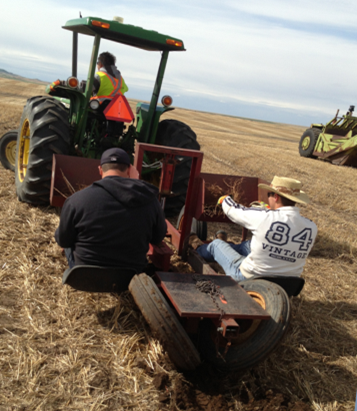Trees and Shelterbelts
Planting trees on your property is a great way to provide shelter for your yard, but also increase biodiversity and create habitat for wildlife. Ensuring you have successful establishment of your trees can start before you put a shovel in the ground. Choosing the right site, the right species, and using the right planting methods can help to ensure you are giving your trees the best start.
Tree Planting
Shelterbelts
Shelterbelts can provide multiple benefits: they can help prevent soil erosion, increase moisture trapping, provide shelter for wildlife/livestock, and reduce the effects of wind in your yard and agricultural fields.
Here are some common tips and tricks to increase your chances of a successful planting.
Site Selection
In order to set your trees up for success, understanding your planting site is important. Soil type, texture, Ph, salinity, compaction, and drainage are all important variables of the soil that could impact your tree. Climatic conditions including wind, frost, sun exposure, and hydrology can influence different types of trees to different extents. The location of your planting site, including the slope and space above, below, and around your tree can influence its growth. By choosing an appropriate site before planting, you can avoid problems down the line.
Tree Species
Different tree species are adapted to different conditions. Choosing a variety of different tree or shrub species can help increase biodiversity and support different insects and animals in your area. Native tree species are a great choice if you are starting a shelterbelt, as they are adapted to climatic conditions in the area already.
Preparing to Transplant
Before transplanting your trees, you should ensure you are digging the hole to the correct depth. When you plant your tree, you want to ensure the root collar (or root flare) is just above the soil surface. Making sure you dig the hole wide enough is also important, as too narrow of a hole can cause the roots to become bound.
Aftercare
After you have planted your tree, continue to monitor its health. Depending on environmental factors, watering, weeding, fertilizing, and pest management might be necessary.

Residents may use Starland County's tree planter at no cost when planting large numbers of small seedlings. A plastic mulcher is also available for those who wish to apply plastic mulch to their newly seeded trees. For more information contact [email protected].


